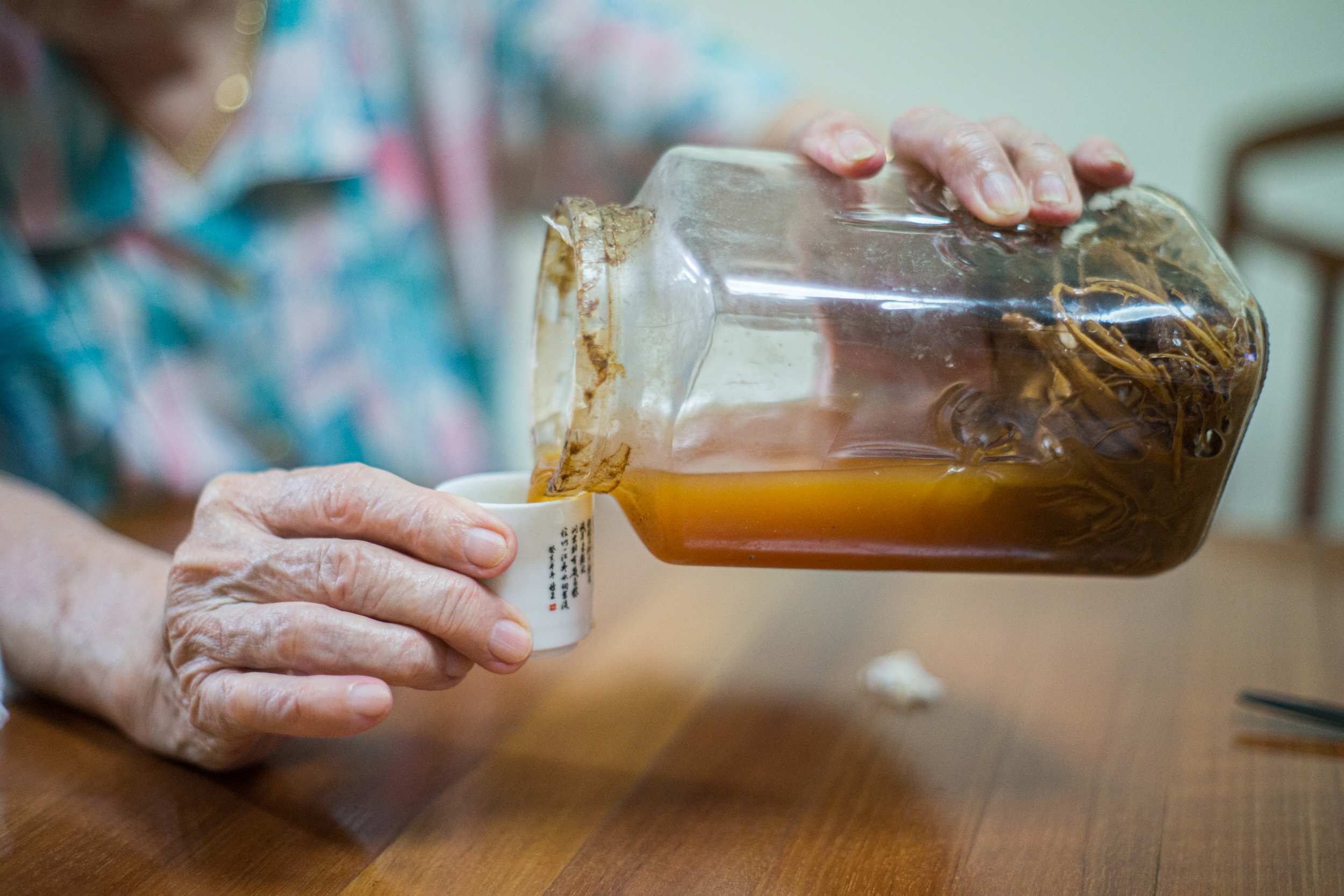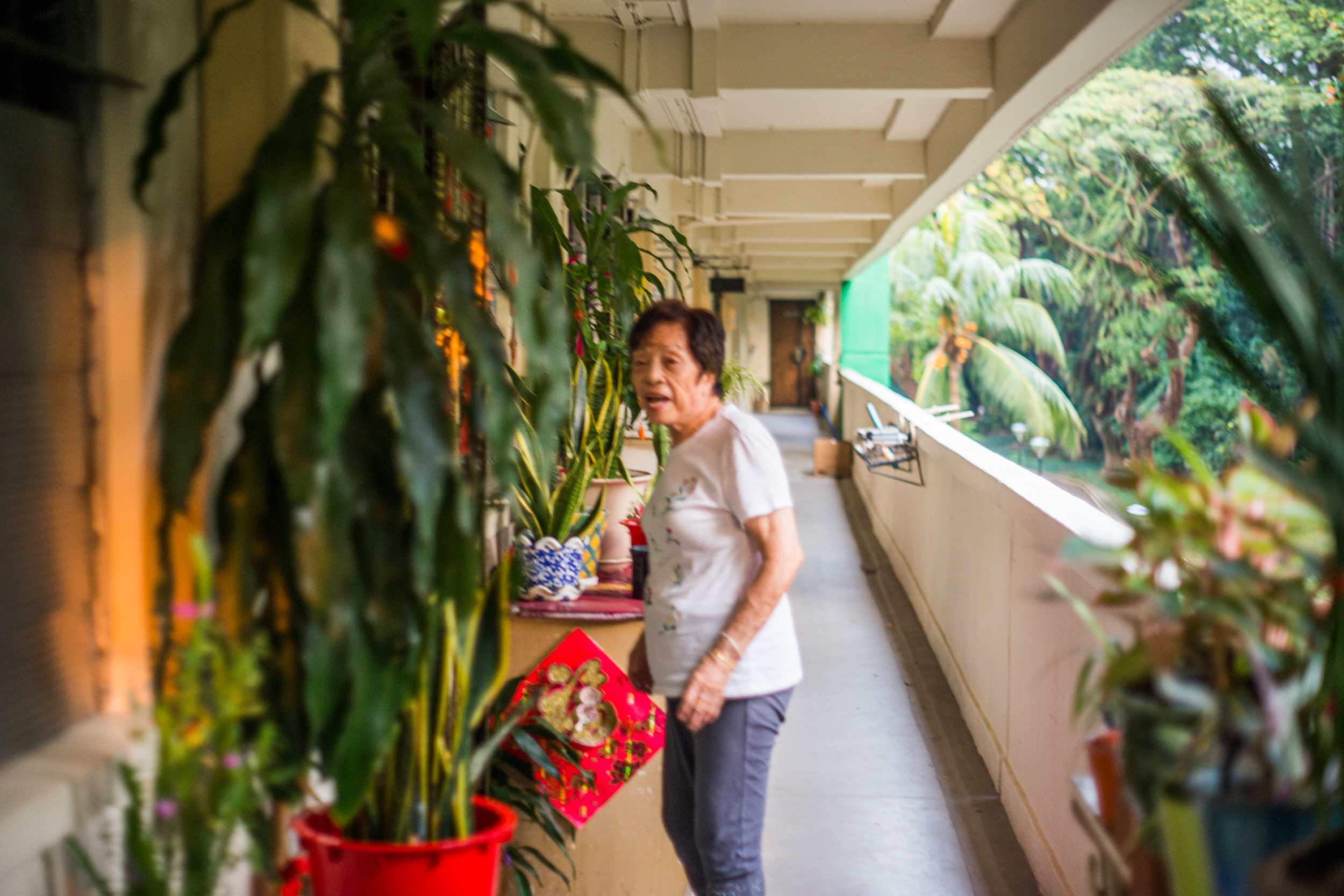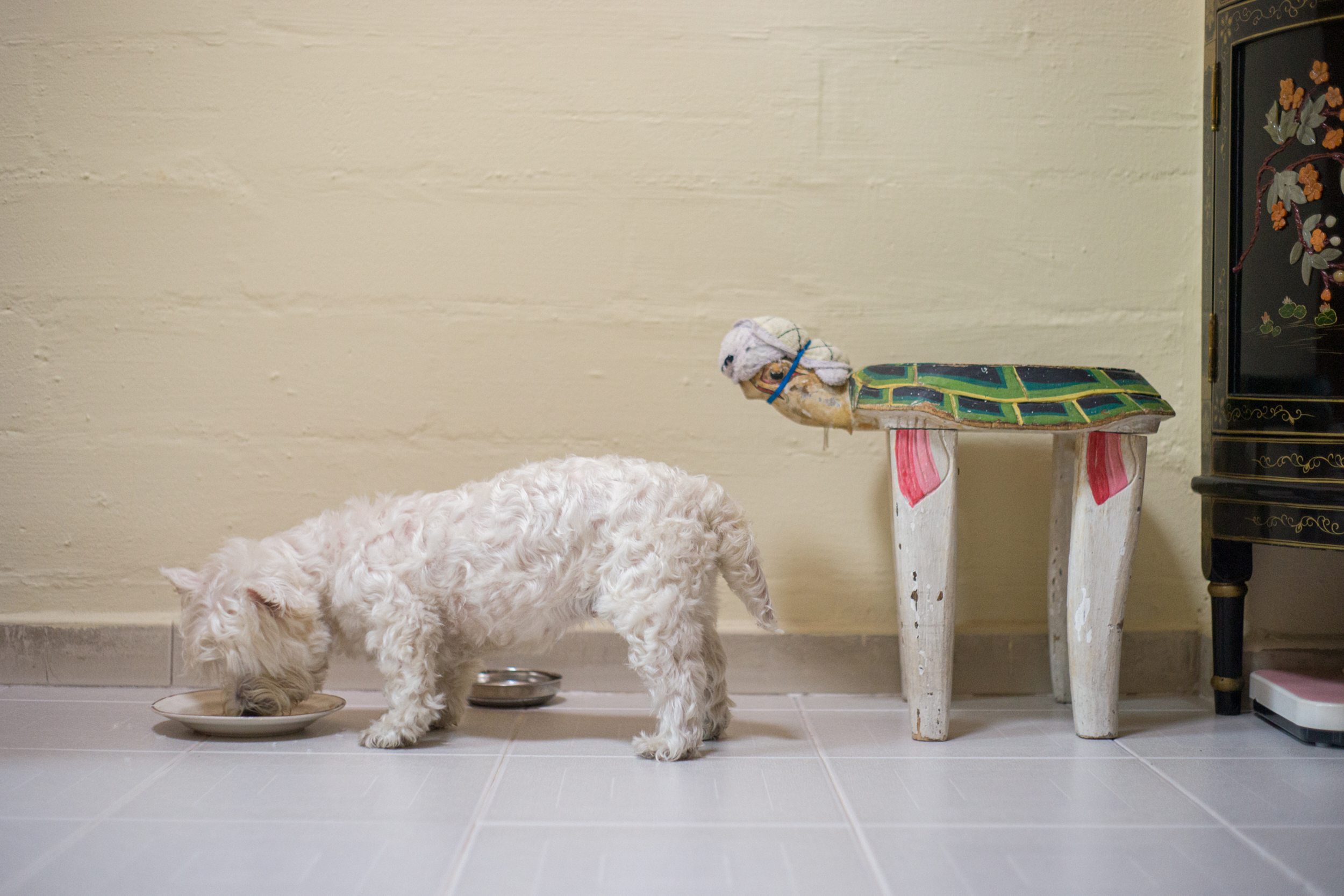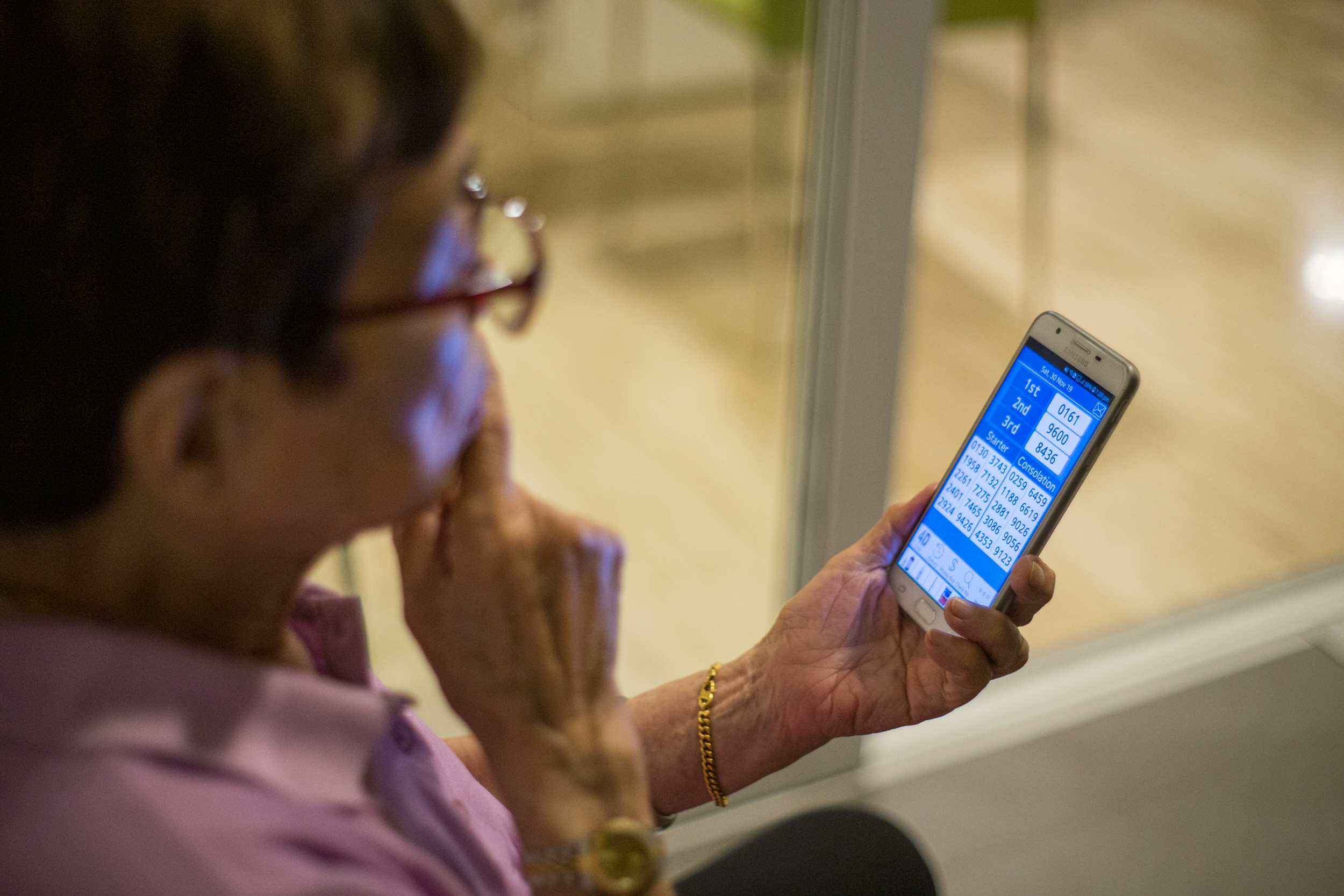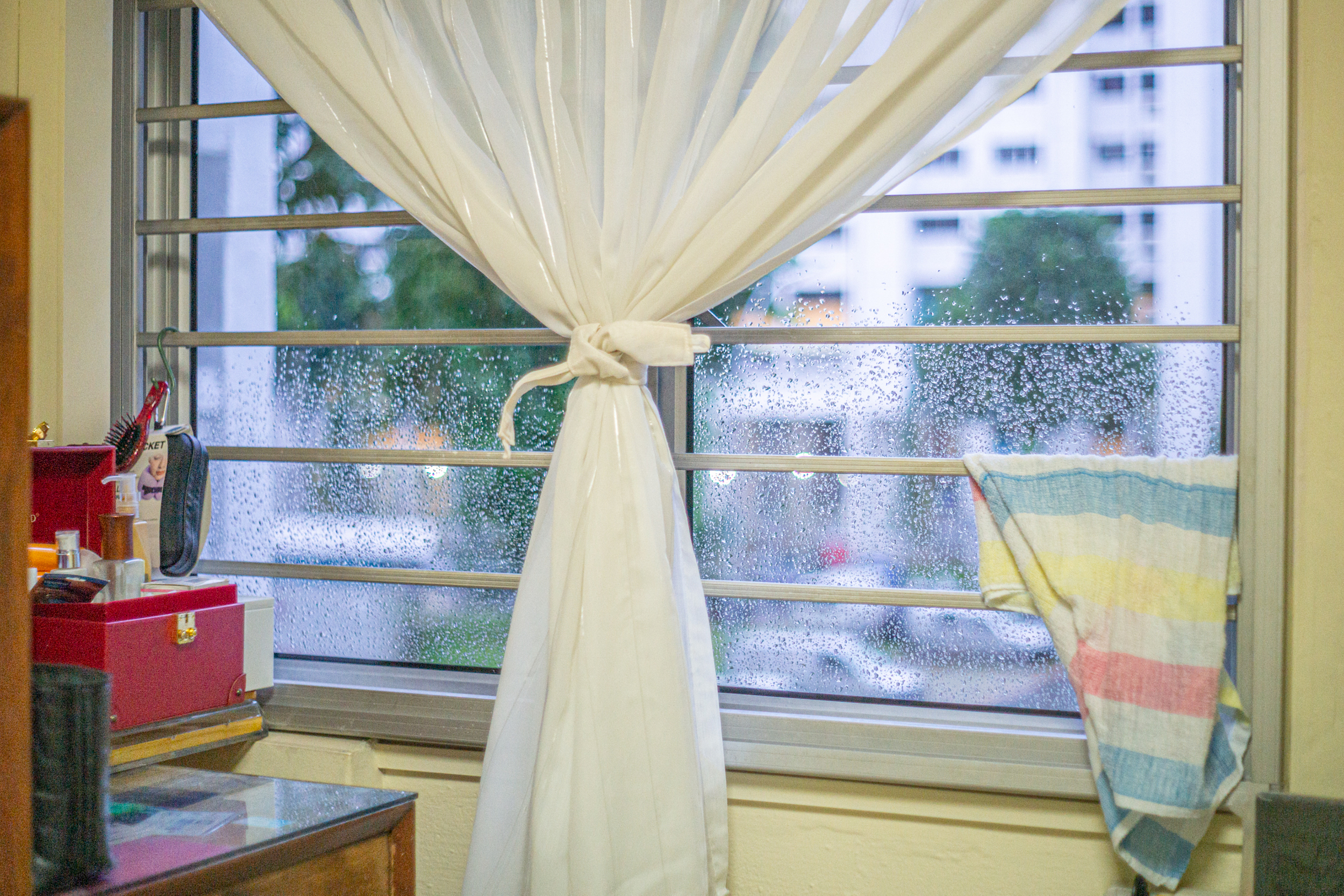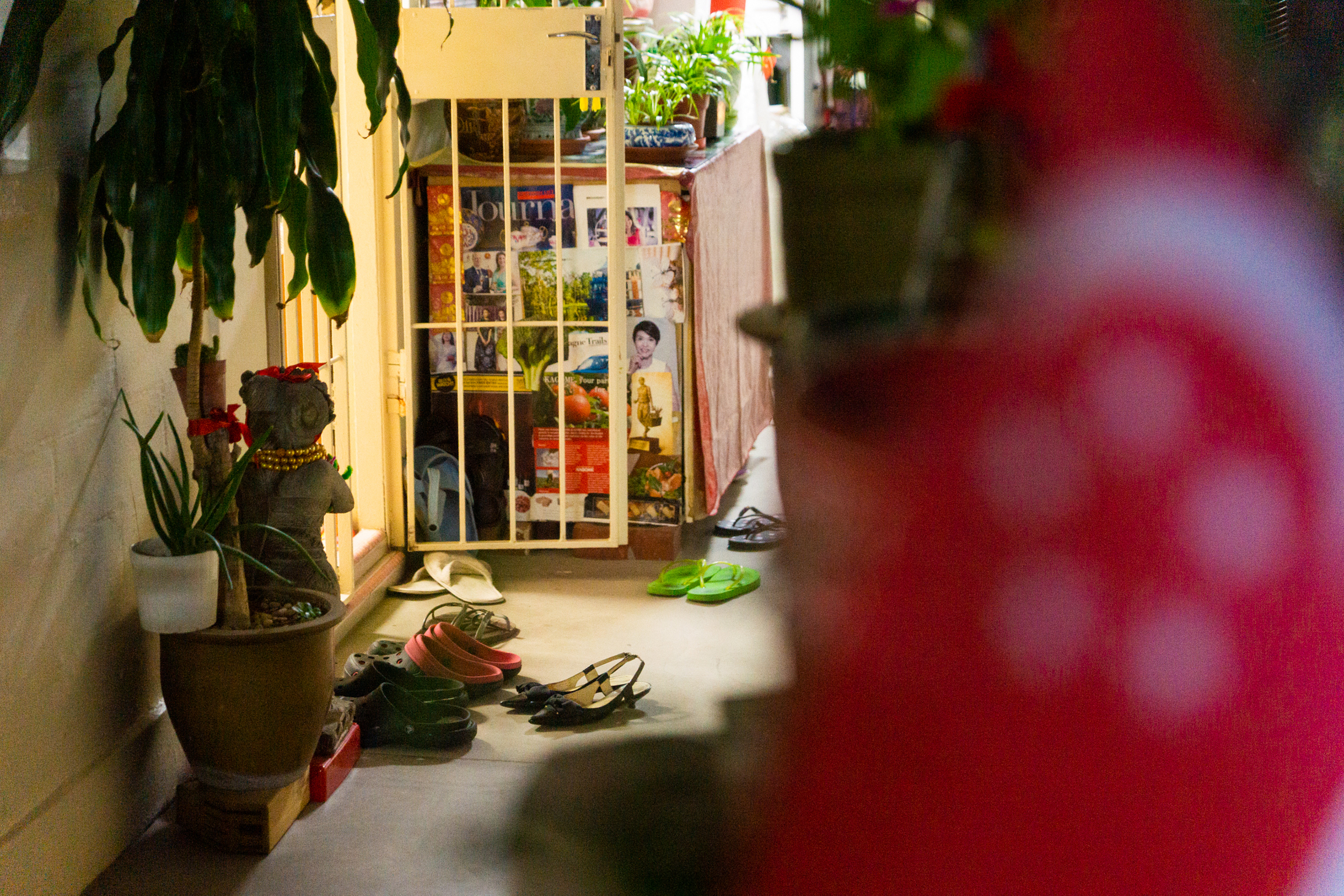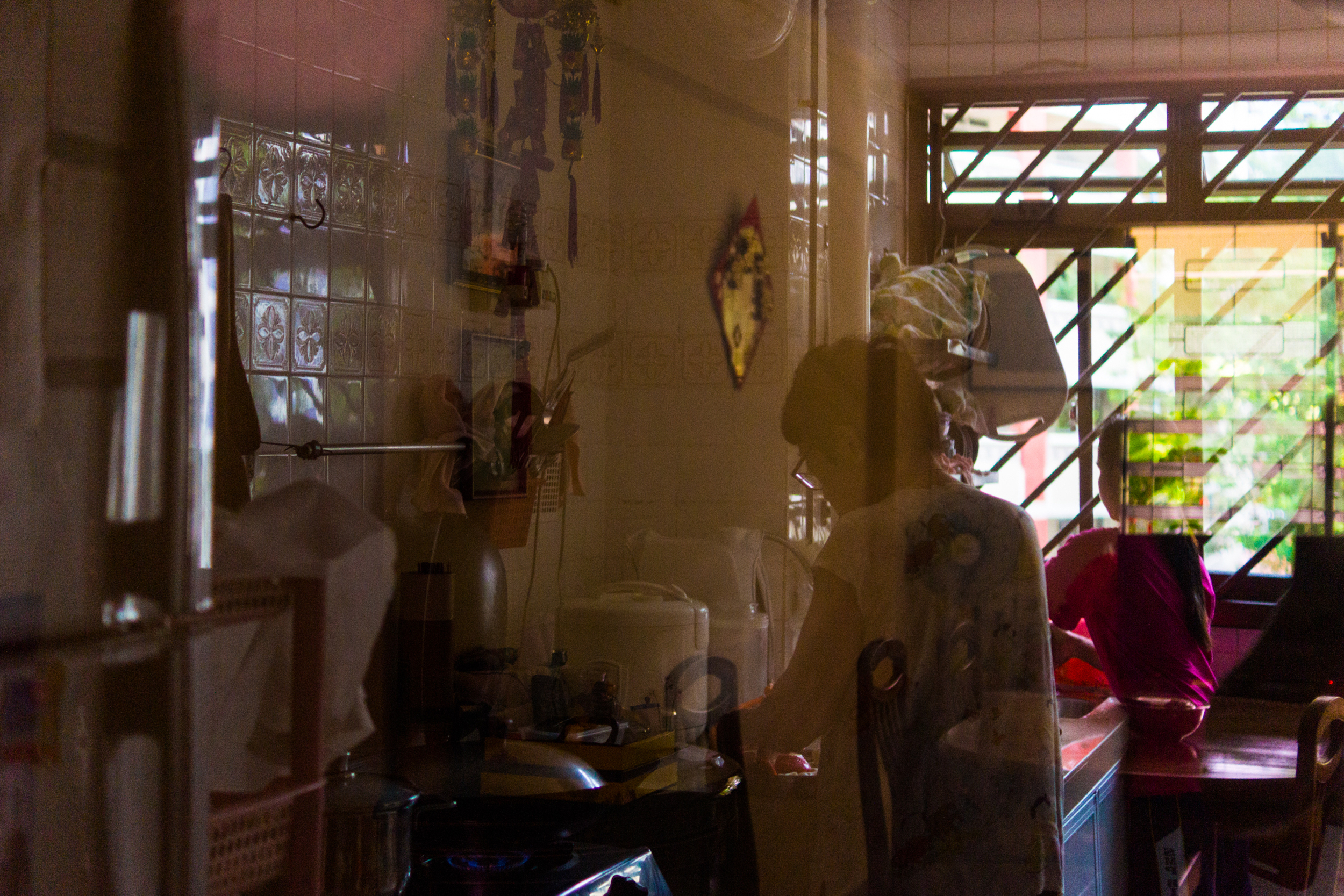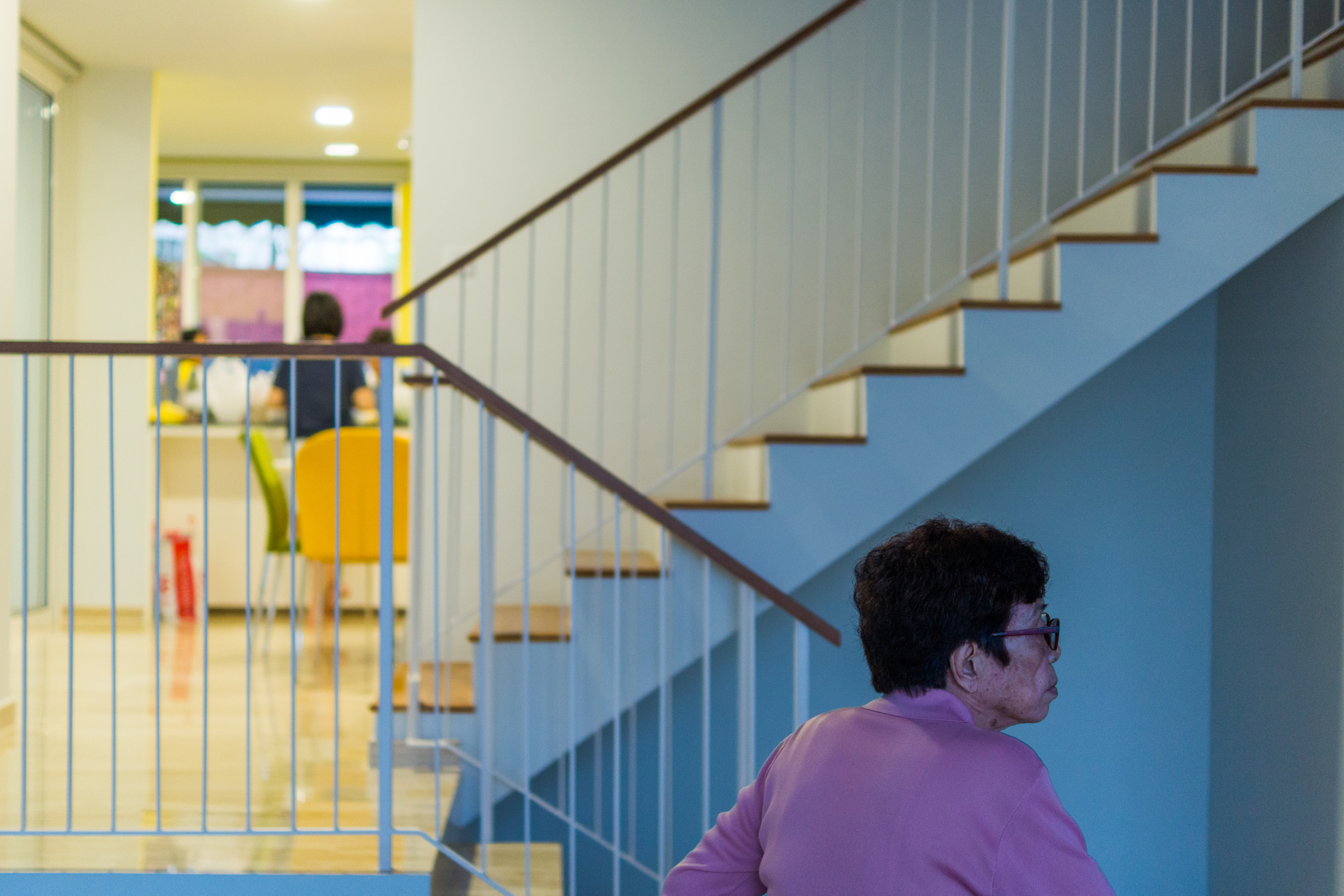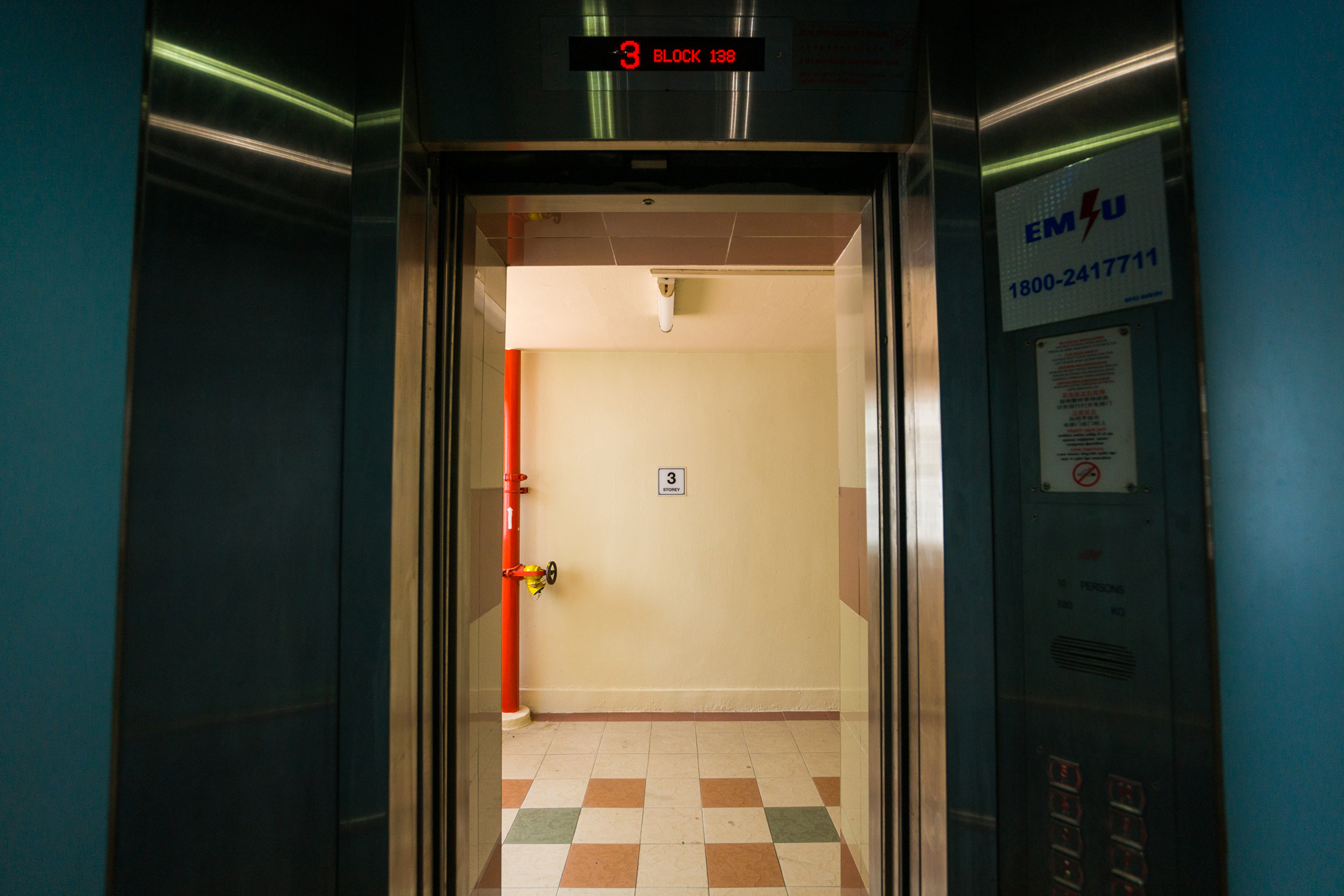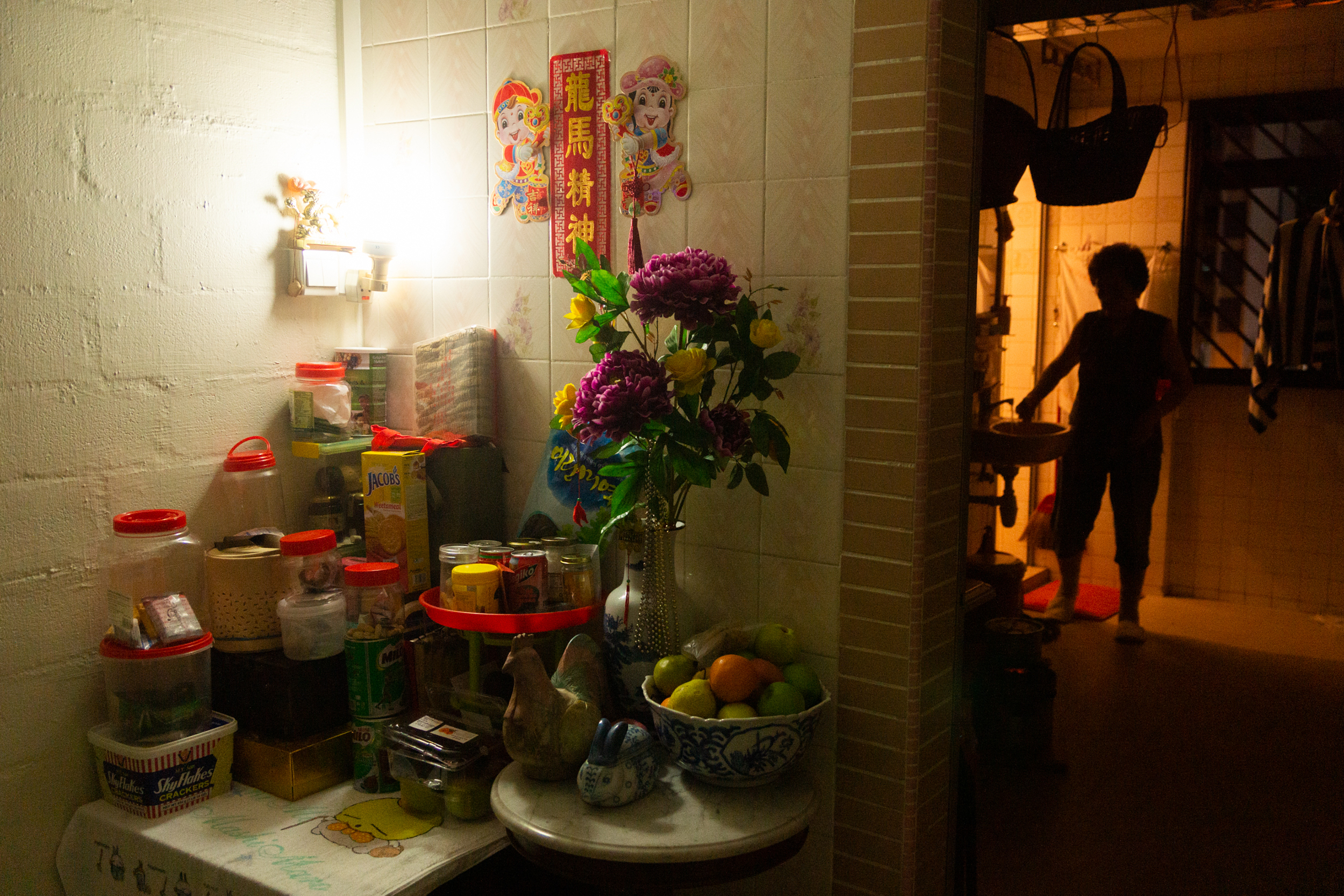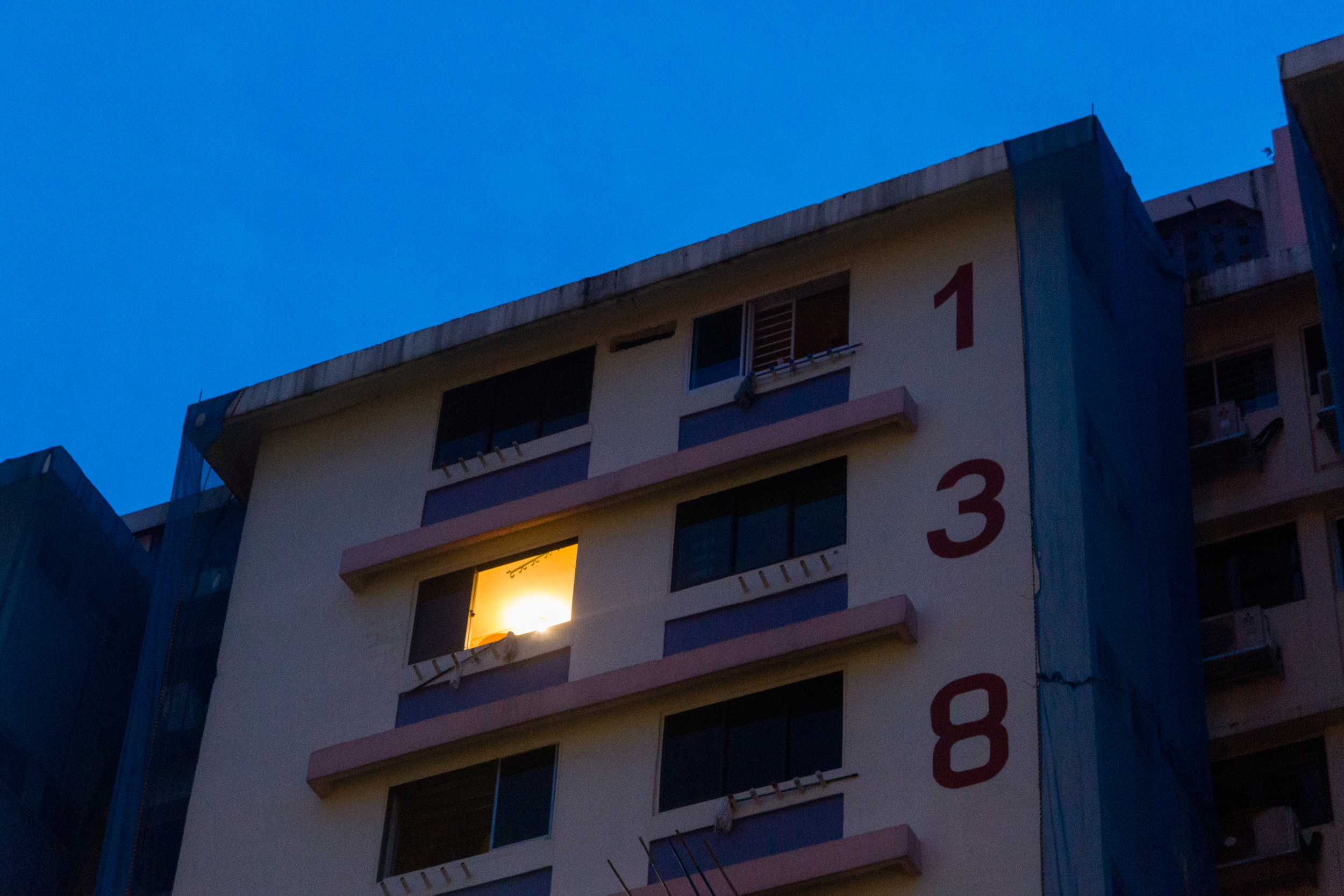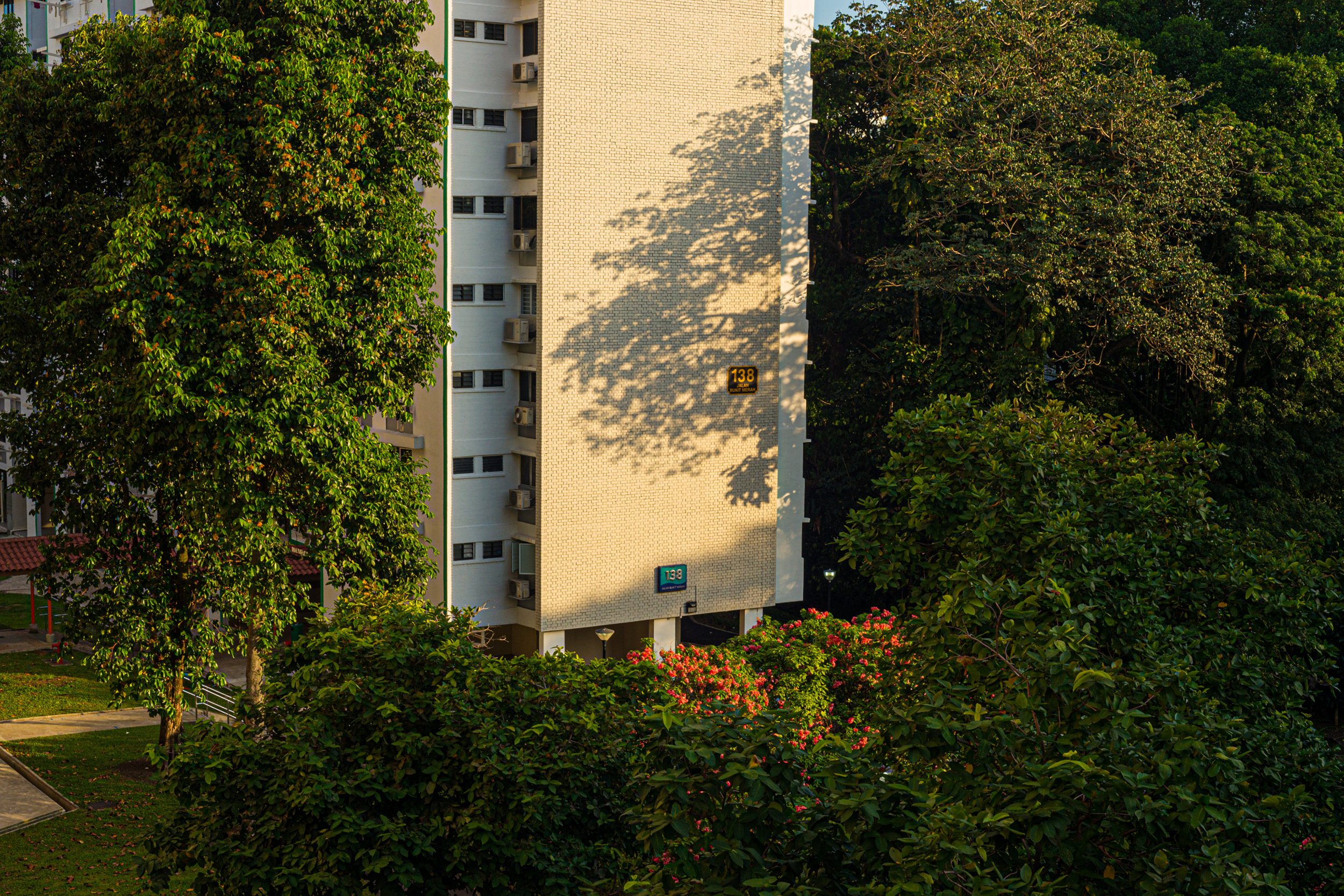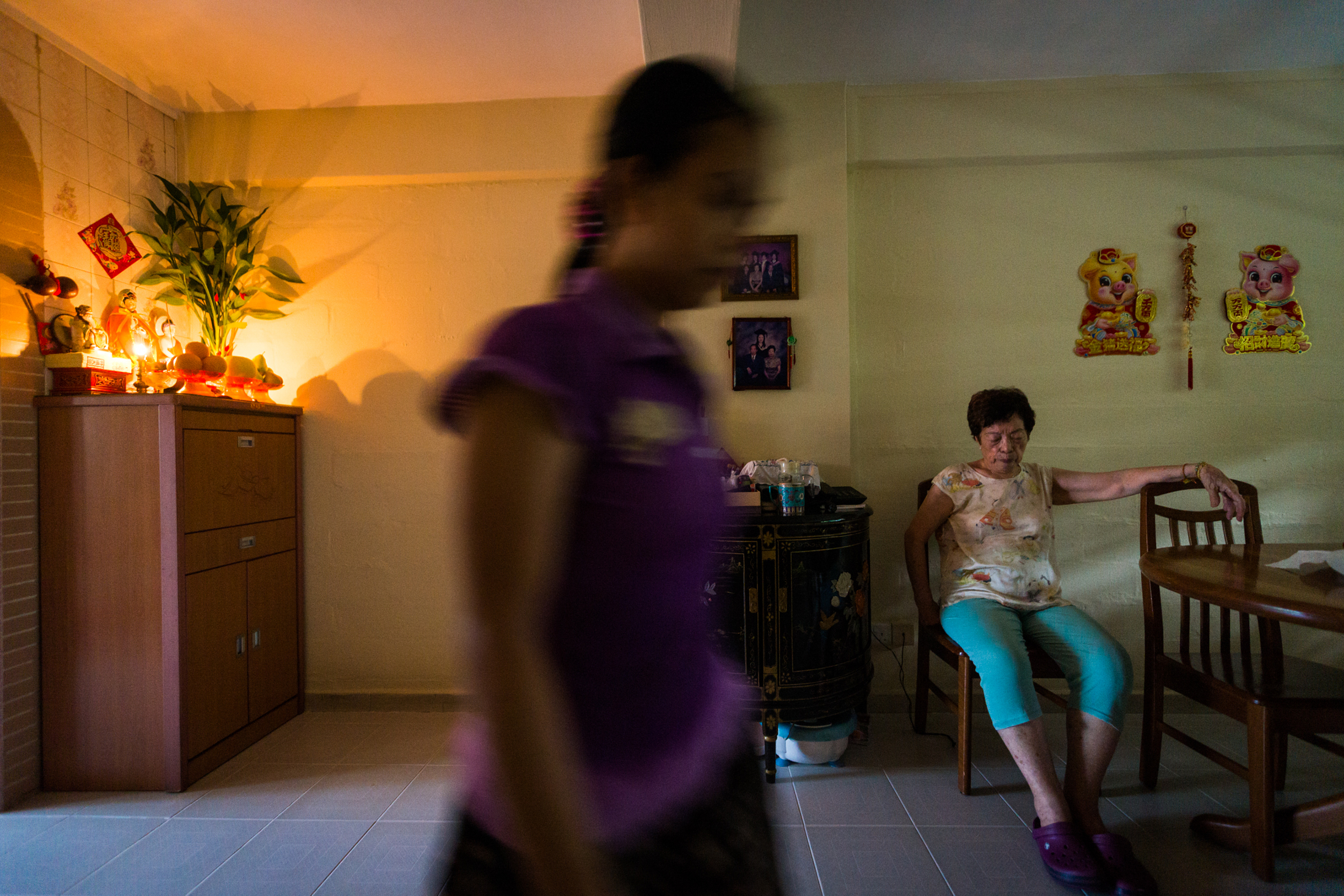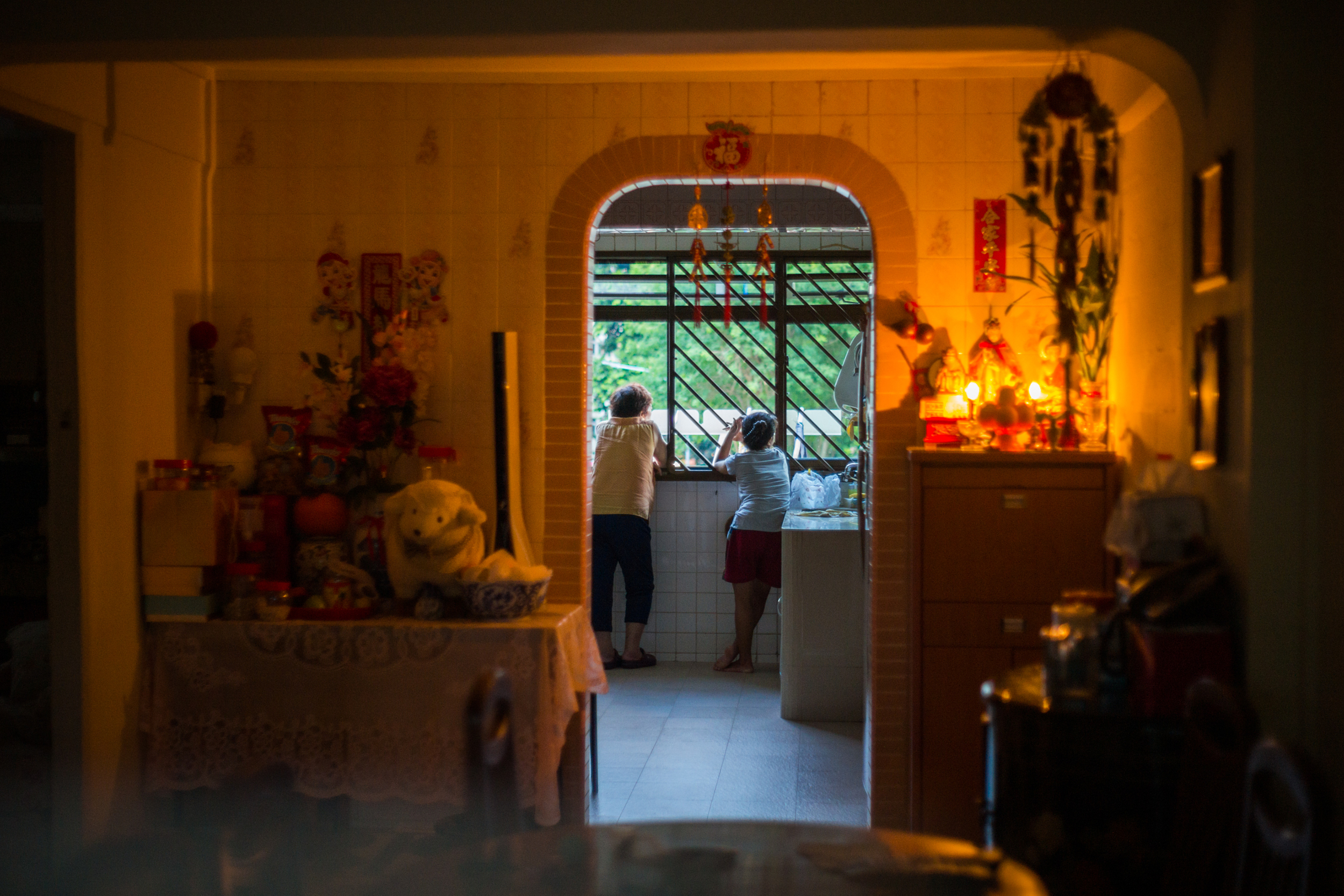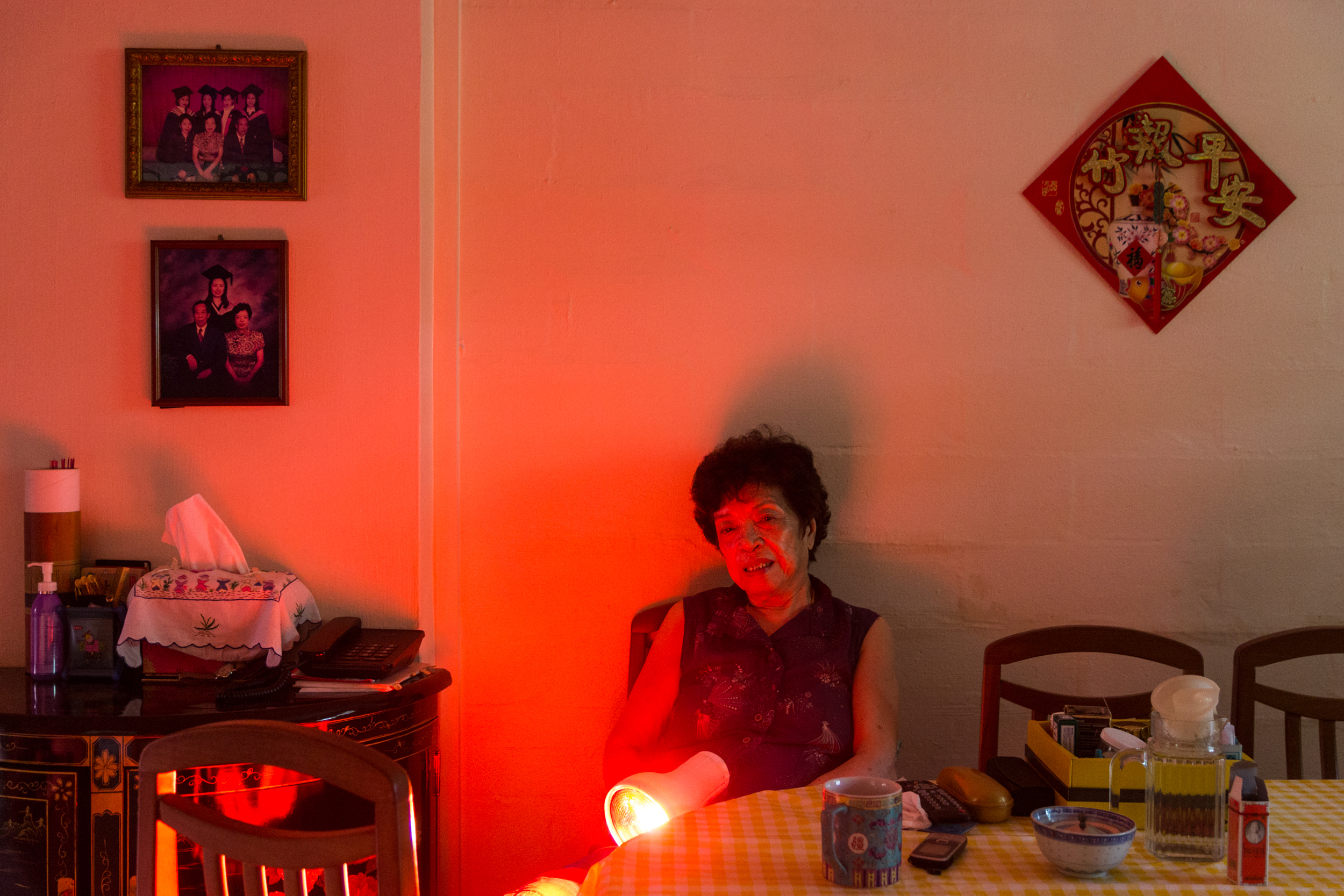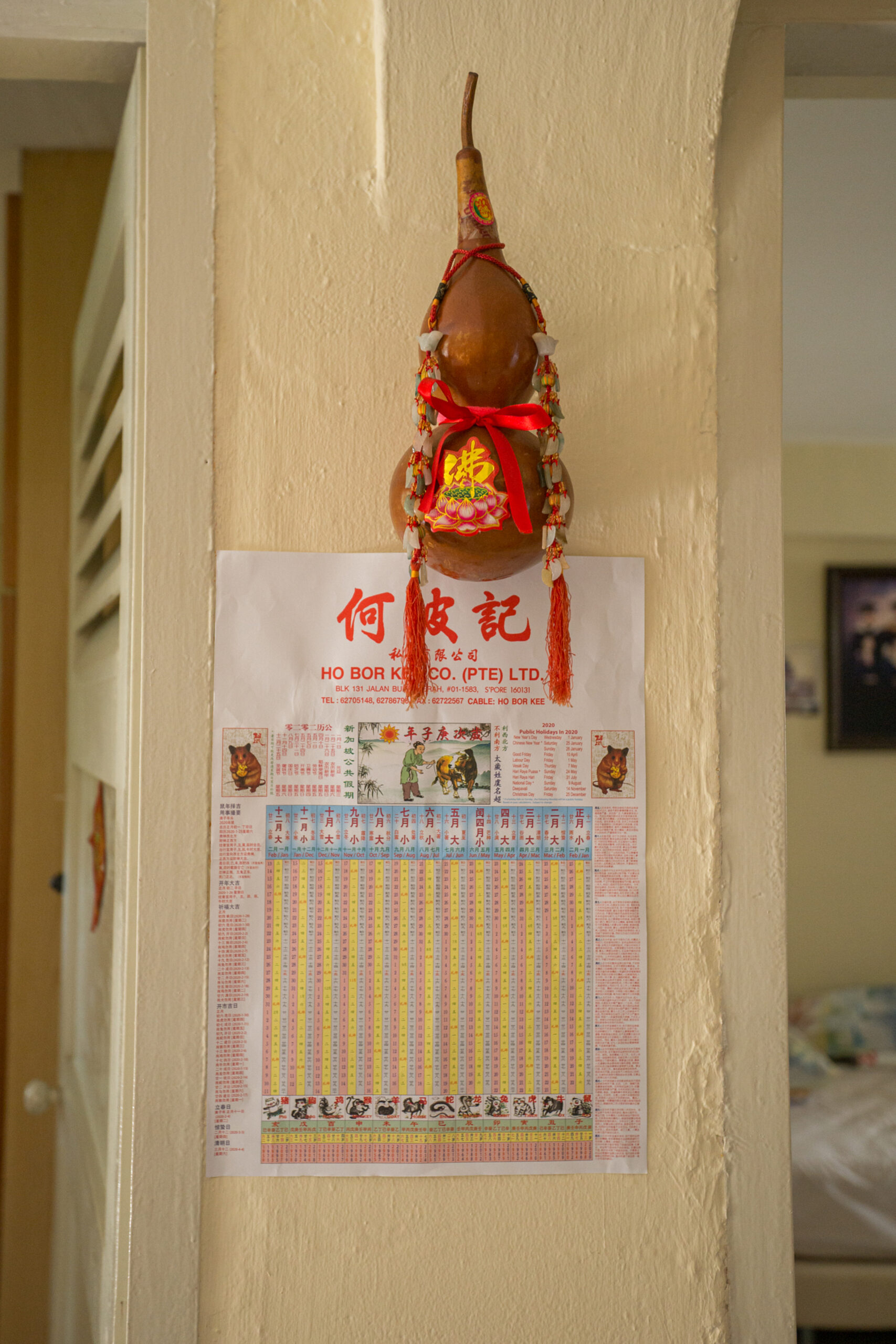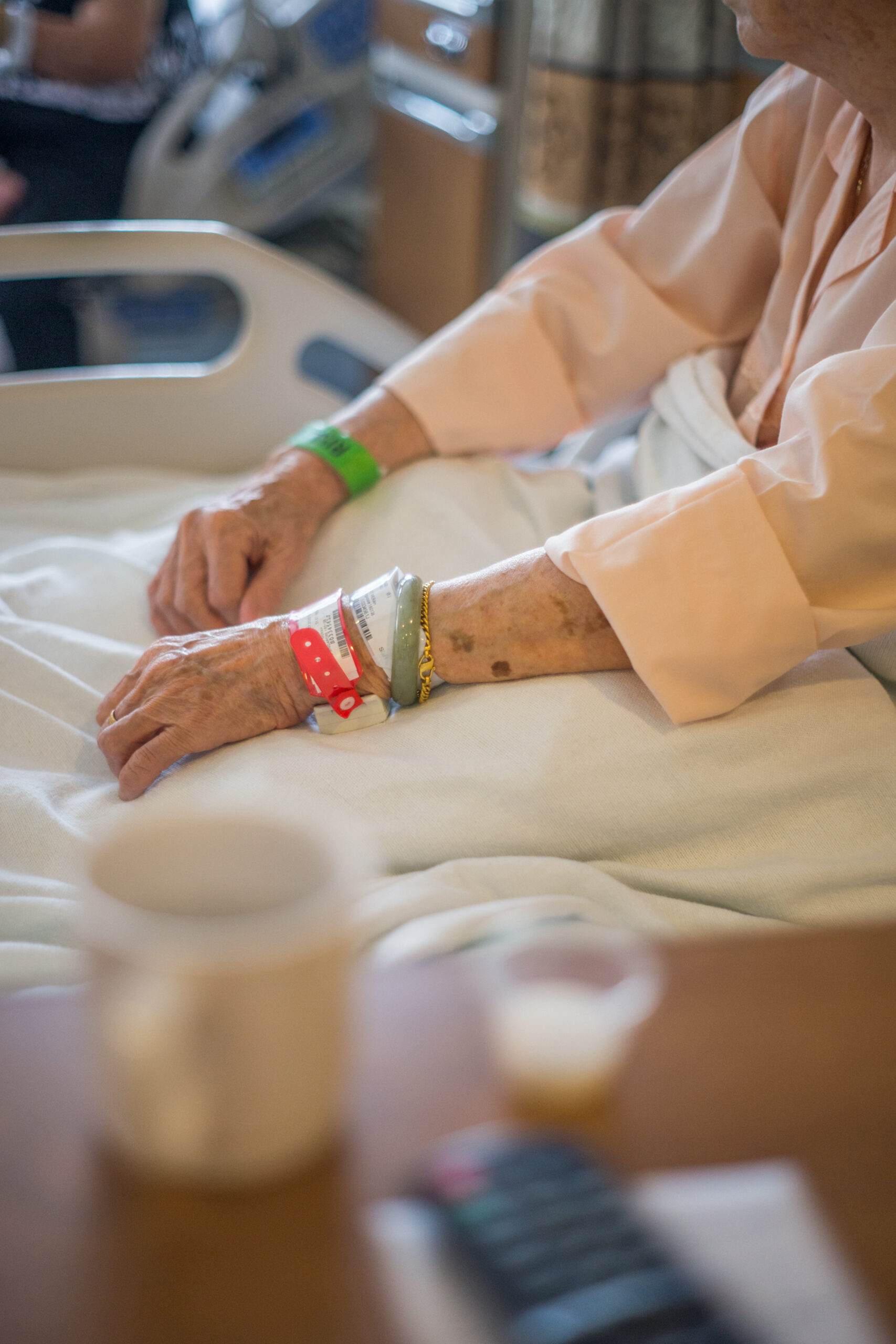Translator : Ravita Buaphuan
One day, I was caught by a photo of the Tudigong altar in an old flat with a silhouette of a short elderly lady in the background. I examined it for a while. Every detail in the picture might seem ordinary, but once an amount of time is spent on it, I found out that it was such a splendid picture by its small details gathered to compose a story.
The most impressive thing was how the photographer managed to portray ordinary things to appear ordinary as they should be, but captivating at the same time. Another thing was that the one who took this photo, Quince Pan, is only 21 years old. I did not hesitate to email him, and a few days later we got to have a talk on video call.
“This project is called JBM. It is a window to my childhood memories that I see through my grandmother.” Quince Pan told me. “I grew up with my grandmother when I was 2-6 years old.” Quince Pan started this project in 2016 when he was 16. It has been going on for four years and a half, and he will continue to shoot for more.
We talked for almost an hour. Excitement gradually changed into laughter. There were a lot of conversations about his collection of photos, his discarded photos, his grandmother’s stuff and her unique accent, his childhood stories with her, and up to the present that he still sees her almost everyday.
Quince Pan is the type of photographer that said to me “I’m still not good enough, not a professional photographer. So I haven’t created an Instagram account for my photographs yet.” Though his photos were selected for an exhibition since he was only 16, and his zines were stored in the National Gallery of Singapore, he said that these are just trivia, and he still has lots of room to improve.
JBM and his other projects we have discussed show that Quince Pan’s photography is a memorandum of his life. It captures the things he witnesses, how he perceives himself and the world. It is therefore not a stagnant body of work, as in every project and every year gone by, his projects will be growing along with himself as a photographer.
Thus for today, we will be peeking through the window called photography, to watch his process of growth altogether.
Quince Pan first picked up a camera when he was 7 years old. He went around shooting with a mini compact camera of his father. After turning 12, his English teacher brought magazines for the students to read, and the news photos featured in them became an inspiration for him to be serious in photography until he joined the photography club of his high school. At the beginning Quince Pan’s photos were directly inspired by journalist photography. And his school’s annual festivals were his field for practicing.
“I began to feel that it’s boring how everyone’s photos appear all the same.” Quince Pan told me about the turning point that changed him from the photos that say ‘who, what, where, how’ like journalist photography, to the photos that do not answer those questions, but invite us to question and feel the moment.
“I signed up for the Noise Art mentorship when I was 16 years old. I got selected as one of 14 artists from 13-25 years old to join a mentorship program. I was mentored by Jean Loo. I learned a lot from her. My mentor always looked at my photographs and asked why this? Why this? It made me think more. That made me realize not to shoot only big events, but to shoot things happening in real life and seize smaller details.”
JBM is a project sponsored by a sufficient budget from Noise Art Mentorship. The name is an initial that Quince Pan’s family call their grandmother’s flat. It is abbreviated from ‘Jalan Bukit Merah’, the neighborhood where grandma lives and Quince Pan grew up. The project has gone far beyond his final project for the Mentorship Program. It turns into a life lesson both for his photographic aspect which he has been improving through the past 4 years of shooting and that required him to rearrange the photos every year. Also the aspect of his identity which he got to reminisce about his childhood and his grandmother, whom the more he shoots for this project, the more he is rebounded to study about her profoundly.
One story of grandma that Quince Pan emphasized so many times I could know that it heavily influenced his work and himself, which is his grandma’s dialect. “Since I was young, she would teach me her ancestor’s language by speaking to me at home. It’s a very unique dialect from a small town in china. It’s not what most Singaporeans speak.” He told me. “Now in the 4th year (of the project), I learn more about myself and also more about her. I invest more in my grandma’s background research that I used to do in my school research which I traced back to her ancestor in China. I want to show her culture in my photographs and think about the details of the artifacts that she keeps.”
Eventually, for Quince Pan, the project JBM does not seem to finish anytime soon. He said that if paying attention, his style and perspective in shooting has changed over the years. For me this is an advantage of a long term project as it allows the photographer to concretely see their progressions under the same theme. Regarding this, normally if it wasn’t the case of COVID-19, he and his family would always have a meal with grandma, so everyday he would get a chance to take photos of her. There were a lot of stories to be learned and a lot of paths to be pursued. “It’s a very grow up project.”, a growth happening both internally and externally, “It changes all the time and I like to keep it that way.”
Quince Pan’s grandma is currently 86 years old, and he wants to keep shooting her for as long as possible.
Quince Pan is turning 21 this year. He is about to attend college in the faculty of Philosophy, Politics and Economics, which he said is one of his interests besides photography.
In 2020, he had just finished 2 years of Singapore mandatory Community Involvement Programme. He was assigned to the police department and the time he spent there became another project of his with the name ‘Land Reclamation’. It is about roadside grass in Singapore. The idea is that normally roads in Singapore would be always clean and neat, but since the outbreak of COVID-19, most grass mowers had to stop working due to the epidemic control measure. So the grass is gradually growing in Singapore. Everyday after getting off work, Quince Pan would capture those grass as his routine. “It is quite an interesting phenomena for me and I keep shooting it consistently.” Quince Pan compiled and arranged the work as a zine which was later selected for an exhibition in the National Gallery of Singapore.
I asked him about his future projects. Of course one of them must be JBM which he will continue shooting. The other project is shooting temples in buildings. As the land prices in Singapore are excessively high, the land of many temples in Singapore were being sold for the construction of buildings, and temples have to be moved as one of the lots in those buildings. Quince Pan said that this project is rather difficult. Some temples are quite strict on their privacy and some are reserved only for family members.
Be it grandmother, grass or temples in buildings, they are all common things. And Quince Pan has an eye that is sharp enough to see the sparks in those dailly mundane things that most people tend to overlook. He brought it up, studied it and attentively portrayed it until we as an audience have to pay attention to those stories along with him.
I said goodbye to Quince Pan after asking him to accept my request on his private Instagram.
I told him I will always follow his work until the day he could finally establish an account for his photographs. “Please keep going.” I concluded. He laughed and said thank you, also assuring me that, as working is a process of growth, he thought he wouldn’t be able to quit taking photos, and he hoped he would be able to keep on going.
And I too, hope to be able to watch this photographer growing up through his work.
You can follow Quince Pan’s work by his website https://quincepanphoto.tumblr.com/
